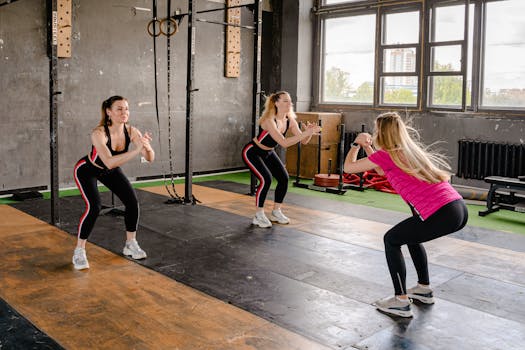Proper Squats: How to Perform Them for Maximum Results
Squats are one of the most effective exercises for building strength, improving mobility, and enhancing overall fitness. They engage multiple muscle groups, including the quadriceps, hamstrings, glutes, and core. However, performing squats incorrectly can lead to injuries and diminish the benefits. This article will guide you through the proper technique for squats, ensuring you achieve maximum results while minimizing the risk of injury.
The Importance of Proper Squat Technique
Understanding the significance of proper squat technique is crucial for anyone looking to incorporate this exercise into their routine. Here are some key reasons why technique matters:
- Injury Prevention: Poor form can lead to knee, back, and hip injuries.
- Muscle Activation: Correct technique ensures that the right muscles are engaged, maximizing strength gains.
- Functional Fitness: Squats mimic everyday movements, improving overall functional strength.
Step-by-Step Guide to Performing Proper Squats
To perform a squat correctly, follow these steps:
1. Start with Your Stance
Your feet should be shoulder-width apart, with your toes slightly pointed outward. This position allows for better balance and stability.
2. Engage Your Core
Before you begin the squat, tighten your core muscles. This engagement helps protect your spine and maintain proper posture throughout the movement.
3. Initiate the Squat
Begin the squat by pushing your hips back as if you are sitting in a chair. Keep your chest up and your back straight. Your knees should track over your toes, not extend beyond them.
4. Lower Your Body
Continue to lower your body until your thighs are parallel to the ground or as low as your flexibility allows. Ensure that your weight is distributed evenly across your feet, with a slight emphasis on your heels.
5. Return to Standing
Push through your heels to return to the starting position. Squeeze your glutes at the top of the movement to maximize muscle engagement.
Common Mistakes to Avoid
Even experienced lifters can fall into bad habits. Here are some common mistakes to watch out for:
- Letting Knees Cave In: Ensure your knees track in line with your toes to avoid strain.
- Leaning Forward: Keep your chest up and back straight to maintain balance.
- Not Going Low Enough: Aim for at least parallel to fully engage the muscles.
Variations to Enhance Your Squat Routine
Once you master the basic squat, consider incorporating variations to target different muscle groups and keep your workouts interesting:
- Goblet Squat: Hold a dumbbell or kettlebell at chest level to add resistance.
- Sumo Squat: Widen your stance and point your toes outward to target the inner thighs.
- Jump Squat: Add a jump at the top of the squat for a cardio boost.
Case Studies and Statistics
Research supports the effectiveness of squats in strength training. A study published in the Journal of Strength and Conditioning Research found that participants who incorporated squats into their routine experienced a 20% increase in lower body strength over eight weeks. Additionally, a survey by the American Council on Exercise revealed that 80% of fitness professionals recommend squats as a foundational exercise for overall fitness.
Conclusion: Key Takeaways for Maximum Results
Proper squats are essential for anyone looking to improve their fitness level. By following the correct technique, avoiding common mistakes, and incorporating variations, you can maximize the benefits of this powerful exercise. Remember to:
- Maintain proper form to prevent injuries.
- Engage your core and keep your chest up.
- Experiment with different squat variations to keep your routine fresh.
With dedication and the right approach, squats can significantly enhance your strength, mobility, and overall fitness. Start incorporating proper squats into your workout routine today and experience the transformative benefits they offer.
